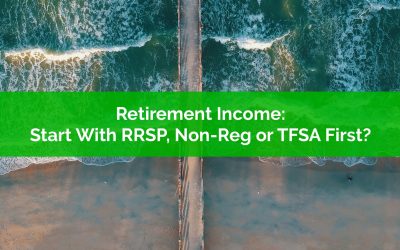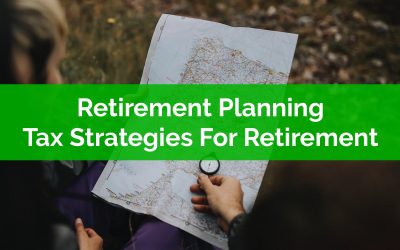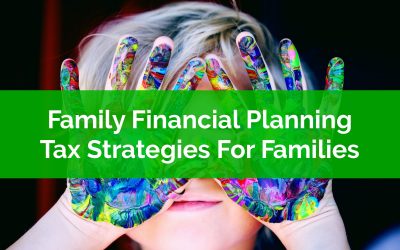Thank you for joining the waitlist!
You’re on the list for early access!
We will contact you via email when we’re ready for you to start your self-directed financial plan. In the mean time here is a quick preview…
Check out our latest blog posts…
Retirement Income: Start Drawdown With RRSP, Non-Registered or TFSA First?
When it comes to generating an income in retirement things can get very confusing, very fast. During your working years you probably have one, maybe two, sources of income, typically a paycheck that arrives every 2-weeks, in retirement however you will likely have 5-10 different income sources coming every month.
A typical retiree will have both CPP and OAS payments in retirement (unless you’re extremely high-income and your OAS is entirely clawed back), plus a typical retiree will also have some investments in an RRSP, TFSA and non-registered account to draw from. Add to that pension payments from a defined benefit pension or maybe a defined contribution pension that was converted into a LIRA/LIF, and we’re up to 6 income sources already. Then we have to add additional payments from government benefits like the federal GST/HST credit, Guaranteed Income Supplement (GIS), and provincial benefit programs like the Trillium benefit in Ontario. Some of these arrive monthly, some quarterly, some just once per year.
And if that wasn’t confusing enough, each income source has its own tax and benefit claw back rules too.
For example, RRSP, CPP, OAS and pension income are all taxed at 100% of your marginal tax rate, but capital gains are taxed at 50% your marginal tax rate, and at some income levels dividend income has a negative tax rate!
Then you have TFSA withdrawals which have no tax at all, and most government benefits are tax-free as well!
All those different income sources naturally create a lot of different strategies to on how to drawdown your retirement assets in the most efficient manner…
Some people believe that drawing down their RRSPs first is the best strategy. Others believe drawing down non-registered assets first makes more sense. There might even be a few people out there who think that drawing down their TFSA first is best.
But the best way to create retirement income and drawdown your retirement assets is actually to mix them all together. Like an expert baker, the key is to mix retirement income sources in just the right proportions to get the best result. The tricky thing is that the exact proportions will depend on your specific situation, how much you have in each account, and how much retirement income you’re trying to create each year.
How much is planning your retirement income worth? How about $100,000 or more in reduced income tax! Even low- and mid-income seniors can benefit from strategic retirement income planning to help them avoid GIS claw backs, which can easily be worth $1,000’s per year.
At the end of this post we’ll show you 7 different withdrawal scenarios’. The difference between the best and the worst is over $328,490 in today’s dollars.
First, a bit of background on why we want to mix retirement income…
Retirement Planning: Tax Strategies For Retirement
Taxes and benefit claw backs are one of the largest expenses that a retiree will face. But with some careful planning we can minimize the impact of these expenses in retirement. Minimizing taxes and benefit claw backs will mean that a retiree can retire on less, spend more in retirement, and have a more secure retirement.
The median income for a retiree is around $36,050 for an individual and $64,800 for a couple but each source of income is taxed very differently. Even with the same income, one retiree could pay way more tax than another retiree even with the exact same income.
When it comes to retirement planning there are a couple of important strategies that we always want to follow. We always want to aim for 50/50 income splitting in retirement and we always want to be very careful about the types/amounts of retirement income when a retiree is eligible for GIS.
When planning tax strategies for retirement we always want to look at the marginal effective tax rate, not just income tax rates. Marginal effective tax rate (METR) is the combination of income tax rates and government benefit claw back rates. METR is the combined impact of tax & benefits on the next $1 of income.
METR is the most important factor to consider when creating tax strategies for retirement. At the end of this post we’ll look at marginal effective tax rate for a couple of specific retirement scenarios.
Family Financial Planning: Tax Strategies For Families With Children
Families in Canada have a very unique financial planning opportunity that isn’t available to other Canadians. This opportunity can help boost their savings and provide them with more cash flow to save in the future. With a bit of careful planning families can reduce their overall marginal effective tax rate and save more money.
First, a little background…
In Canada, there are two types of “tax rates”. The first is income tax. This one is easier to understand. As your income increases you pay more income tax. The second tax rate is actually a “benefit claw back rate” and it works the same way as tax rate, the more your income increases the less you receive in benefits. In Canada, most government benefits are “clawed back” based on household net income. This means that as you earn more income your benefits will be reduced, or “clawed back”, and the effect is the same as income tax.
Families have a unique tax and financial planning opportunity because some government benefits don’t get clawed back until family income is well into the $100,000+ range. This means there are certain tax strategies that are unique to families, even those with above average incomes.
All families with children under the age of 17 are eligible for the Canada Child Benefit (CCB). The Canada Child Benefit is one of the most generous benefits in Canada, it’s even available to high-income earners, but it also has one of the highest claw back rates too. But, with careful planning it’s possible to avoid some of these claw backs, increase your annual benefit, and as a result increase your annual savings as well.
Claw back rates on the Canada Child Benefit range from 3.2% to 23% for each extra dollar you earn. The exact claw back depends on the number of children and your household net income.
The claw back means that if you earn an extra $1,000 this year, your benefit could be reduced by $32.00 to $230.00 next year!
This is even higher for low-income families who also receive other government benefits, like the GST/HST credit or Trillium benefits in Ontario, which all have claw back rates as well.
The opportunity for families is that RRSP contributions will DECREASE their taxable net income and will INCREASE their benefits. That means that a $1,000 RRSP contribution this year will INCREASE your Canada Child Benefit by $32.00 to $230.00 next year!
This means that families in particular can strategically save using an RRSP instead of a TFSA and boost their government benefits. This is counter to most financial advice that suggests low-income Canadians should prioritize their TFSA first. While this advice might be true for many low-income Canadians, it’s not necessarily true for families.
We’re going to take a look at four examples to show you just how impactful this type of financial planning can be.
Note: These are examples only, specific to Ontario, and should not be used for financial planning purposes. Income tax and benefit rates are very dependent on family income, income split, ages of children, province of residence etc. To understand the impact for your family we recommend building a custom financial plan with an advice-only financial planner.



